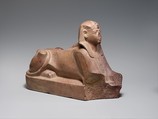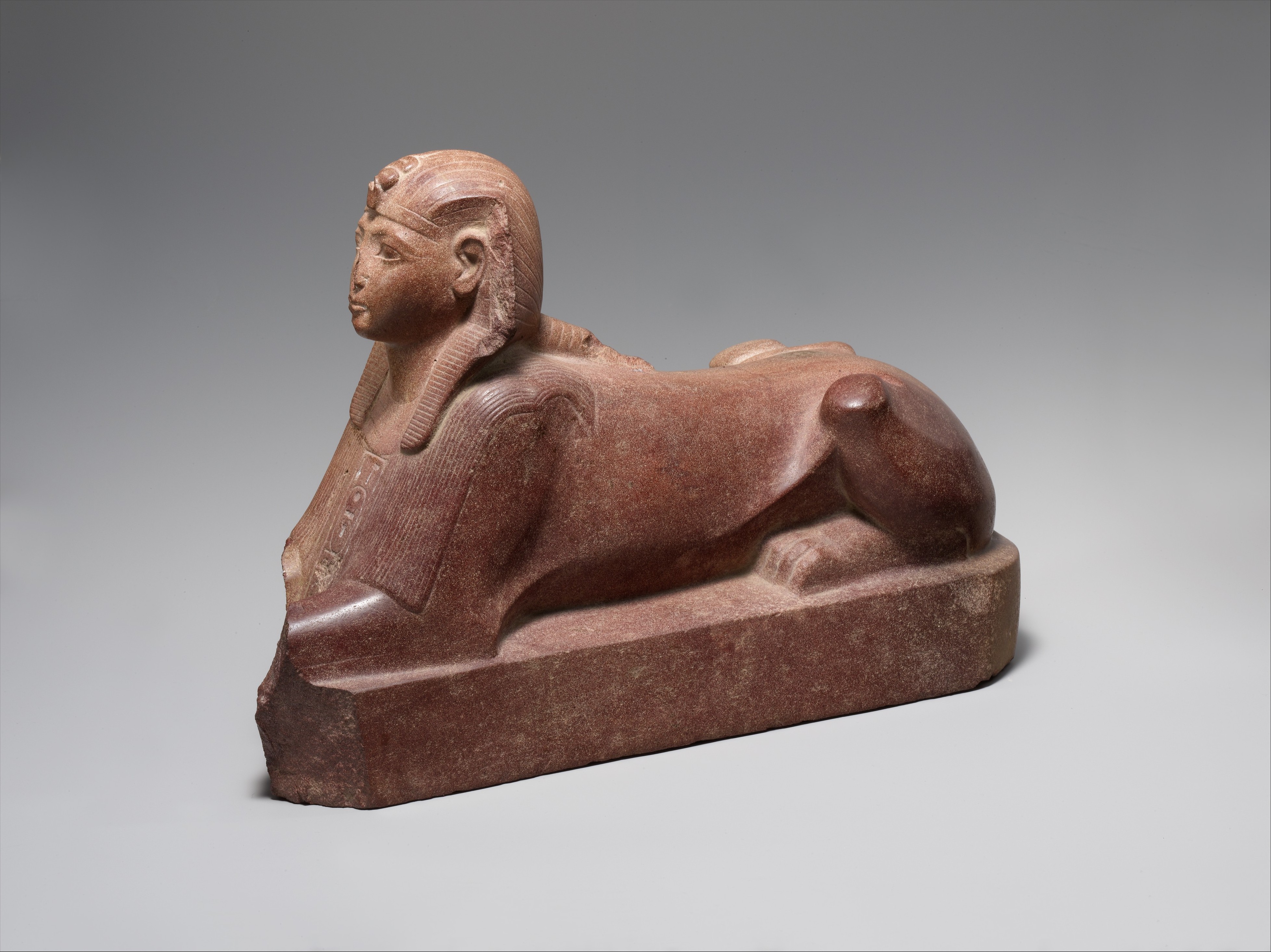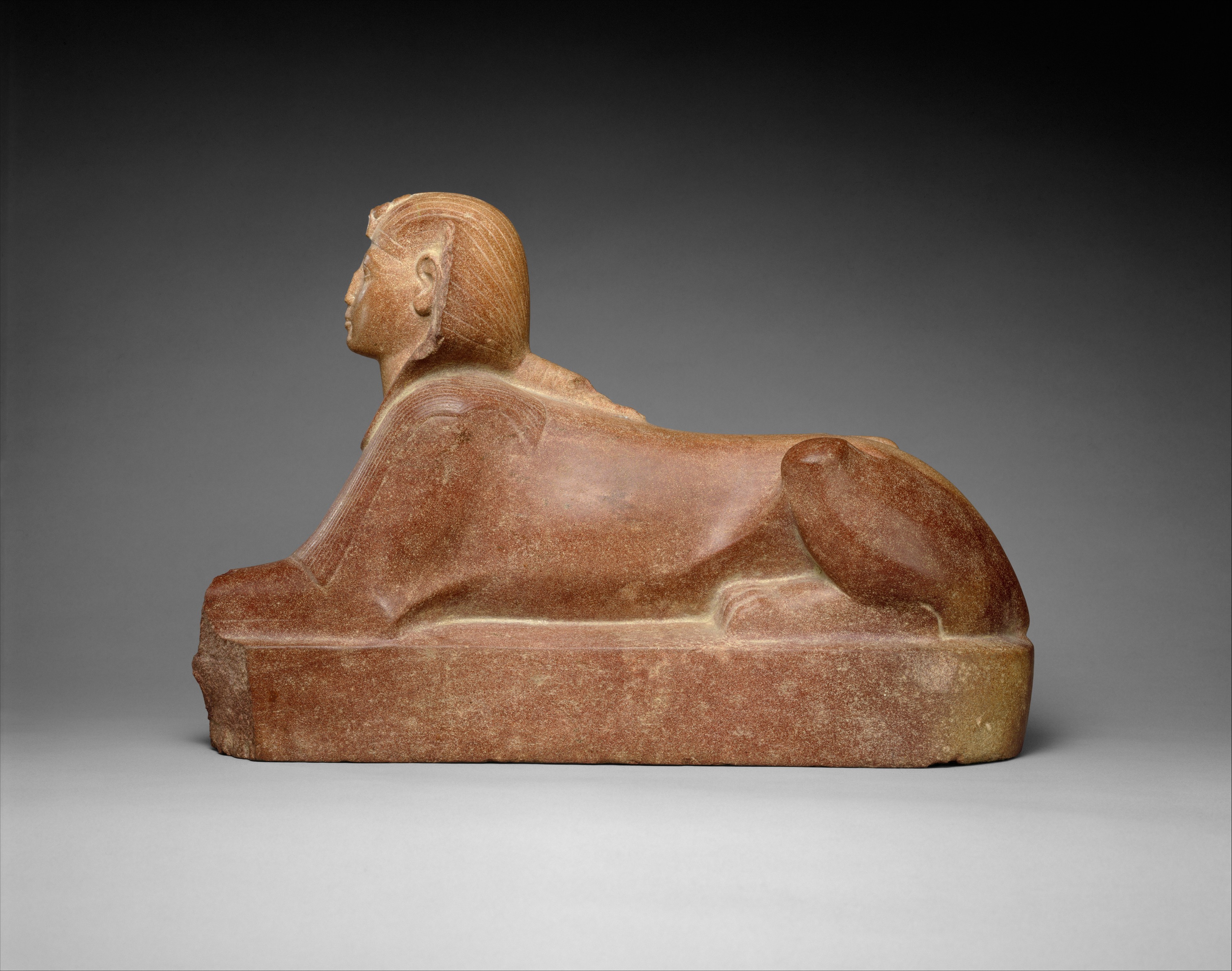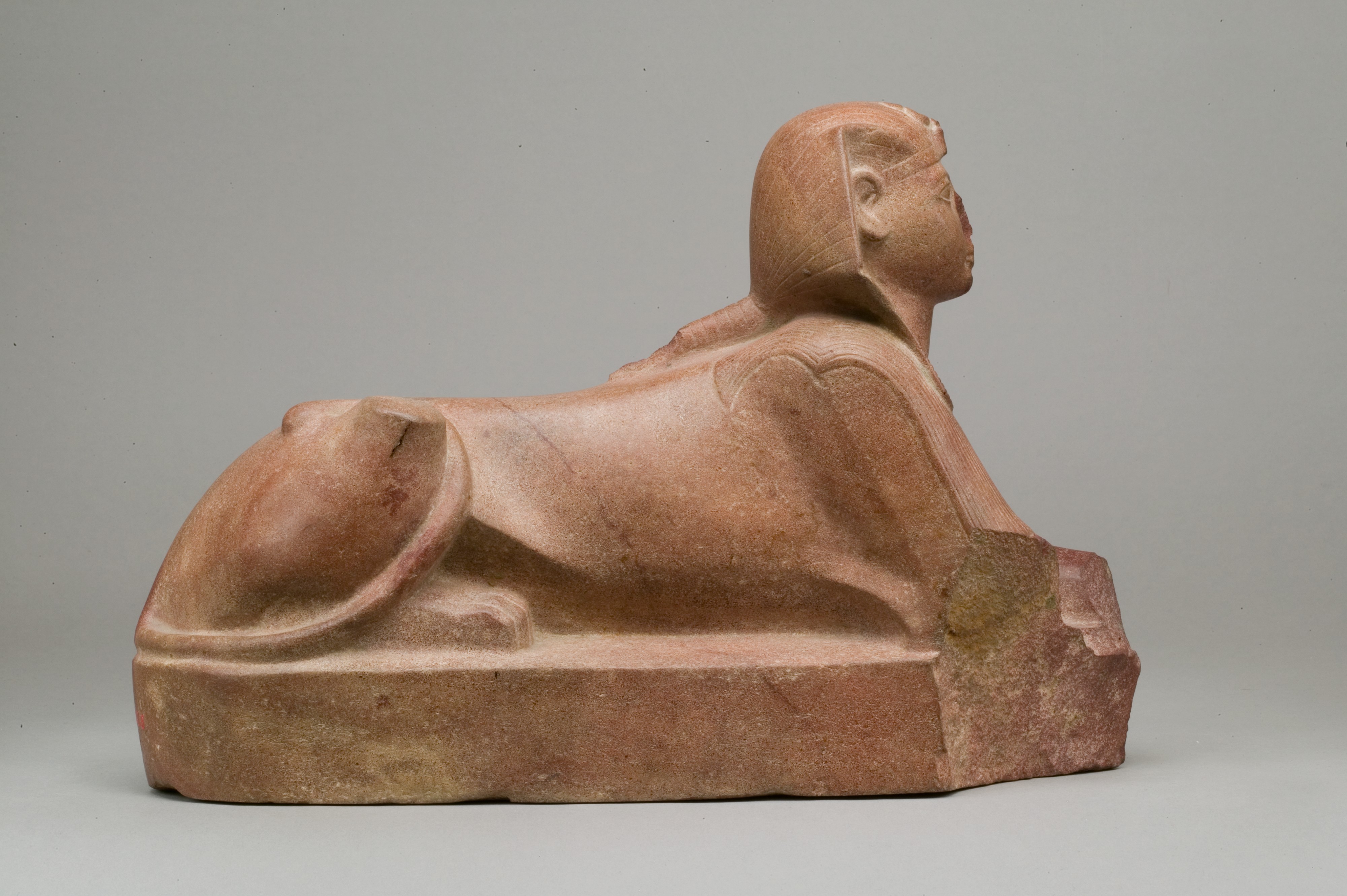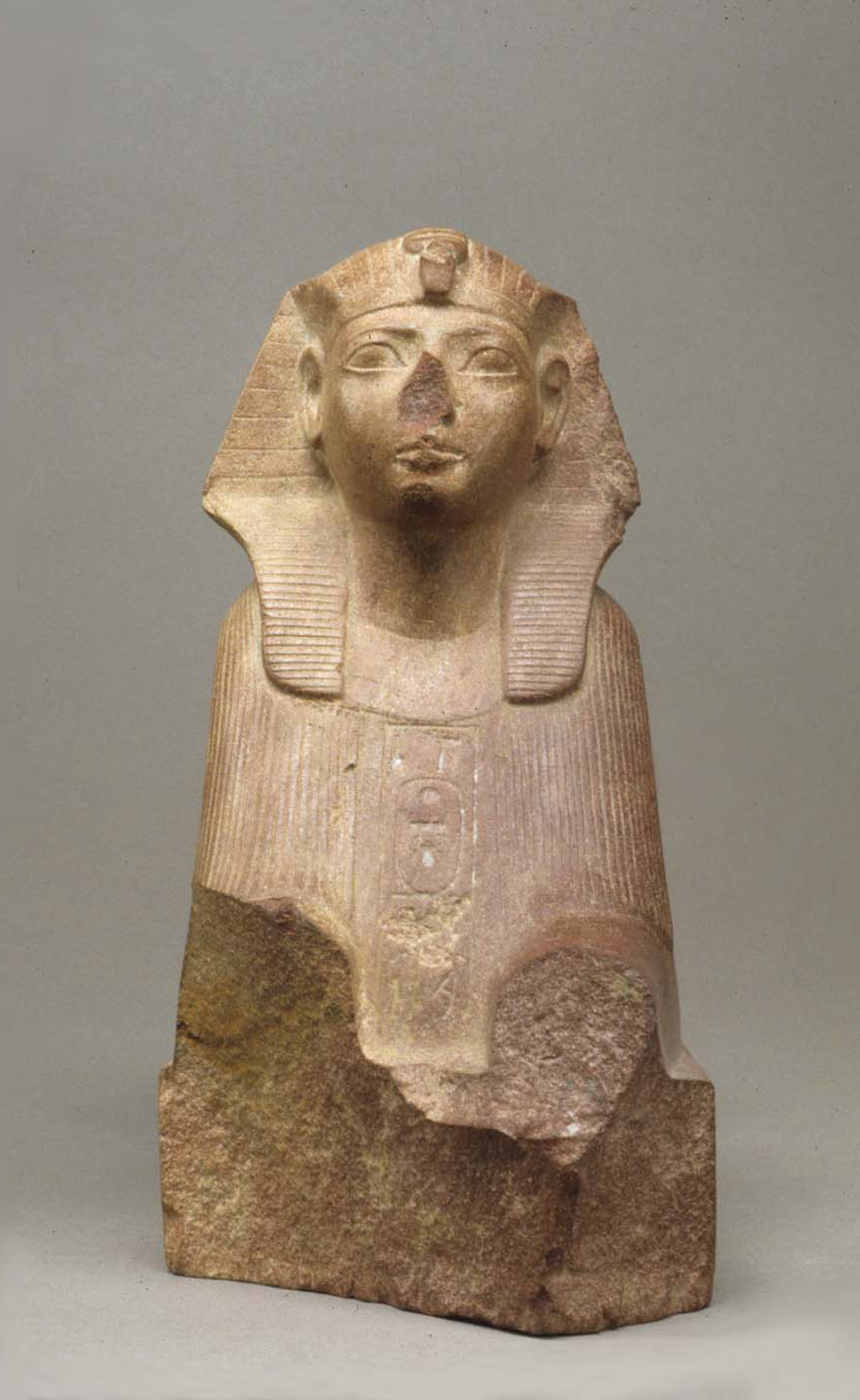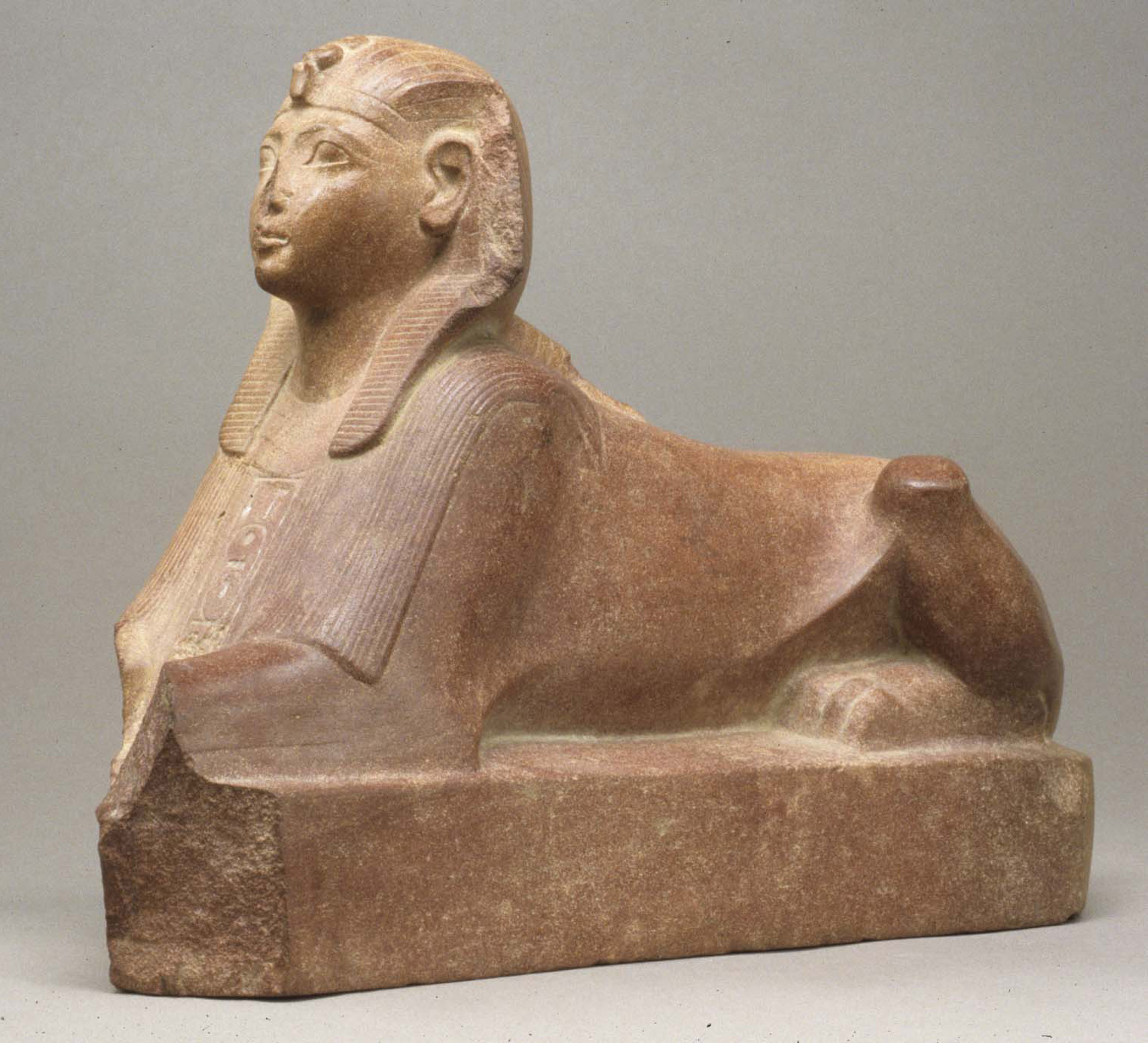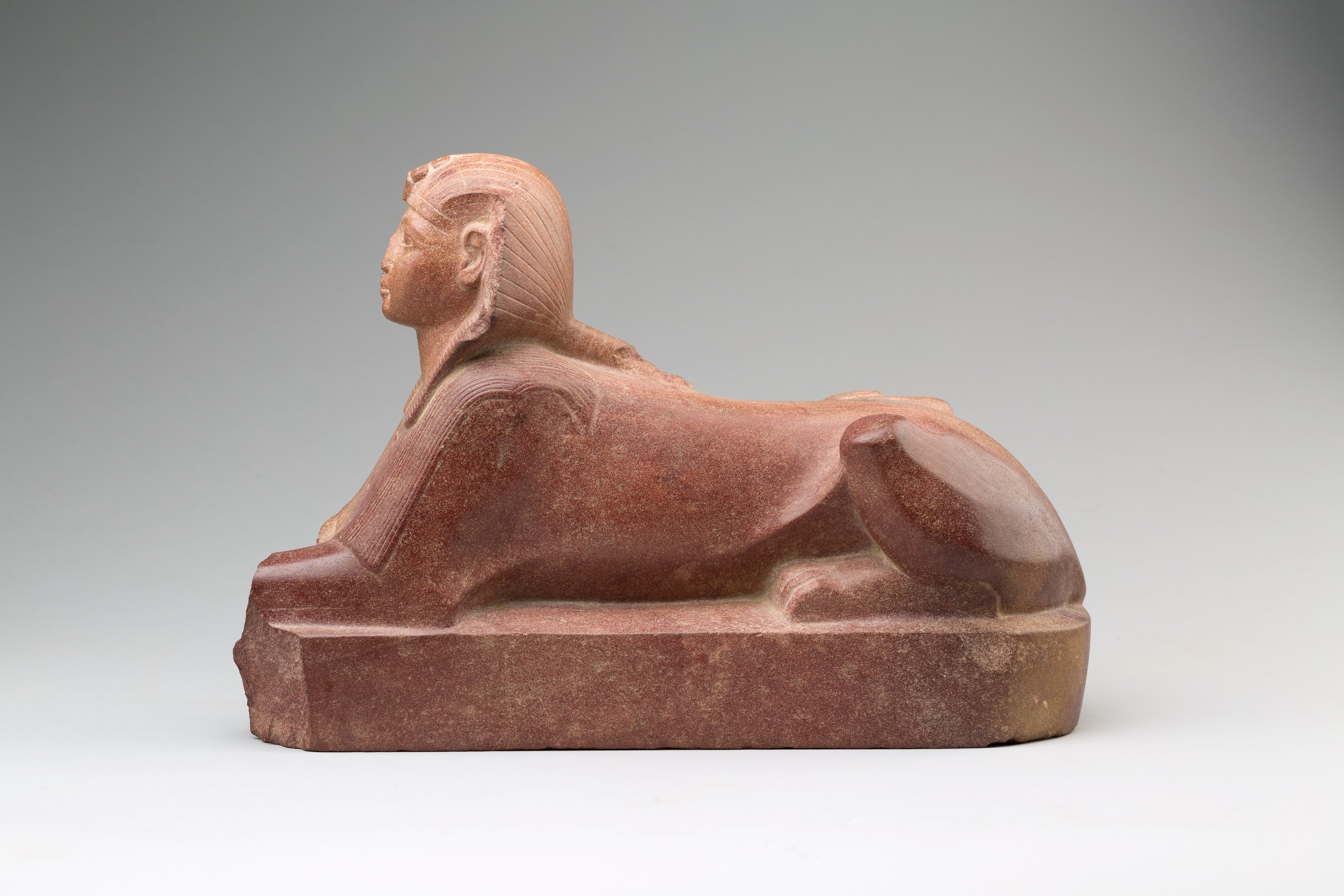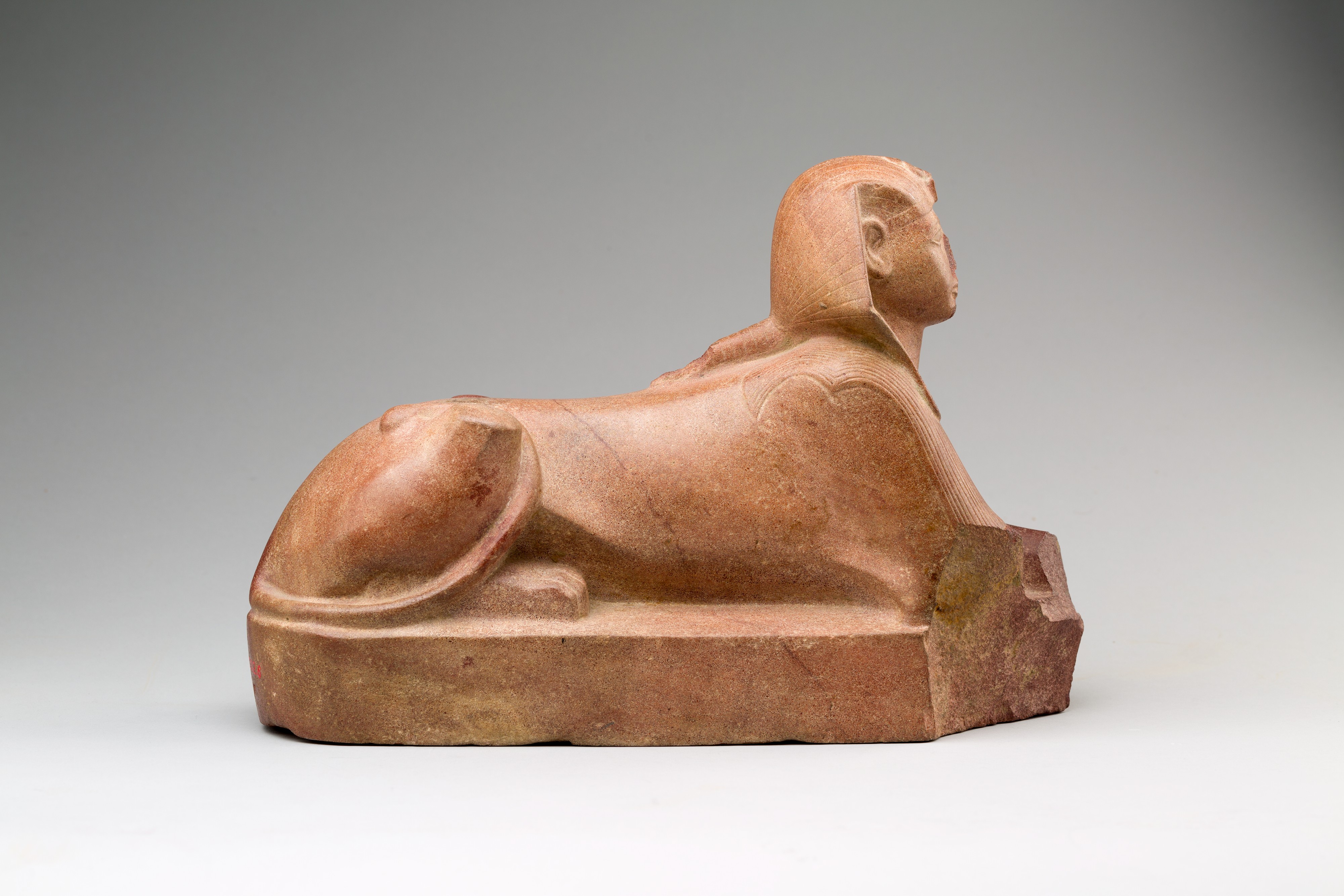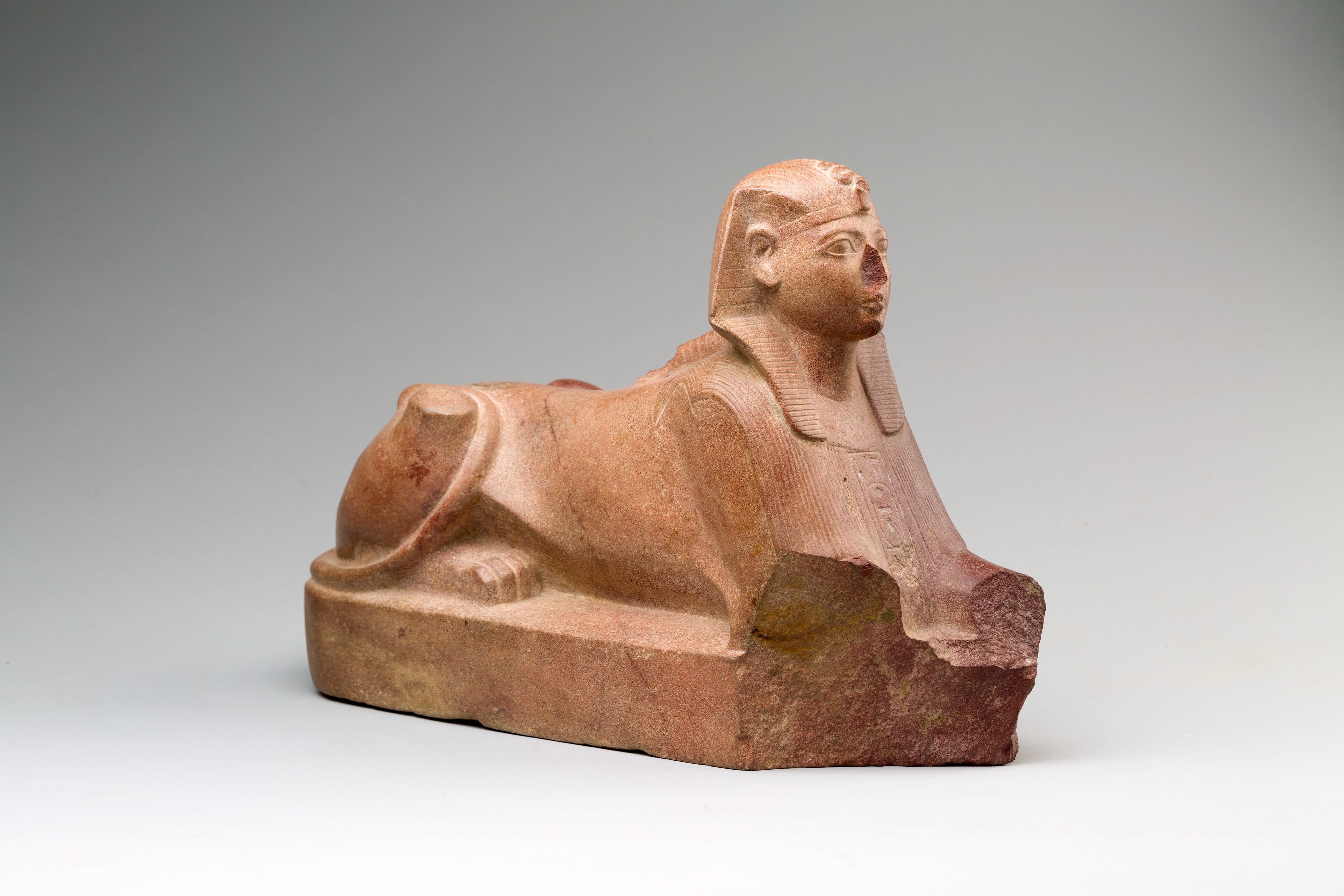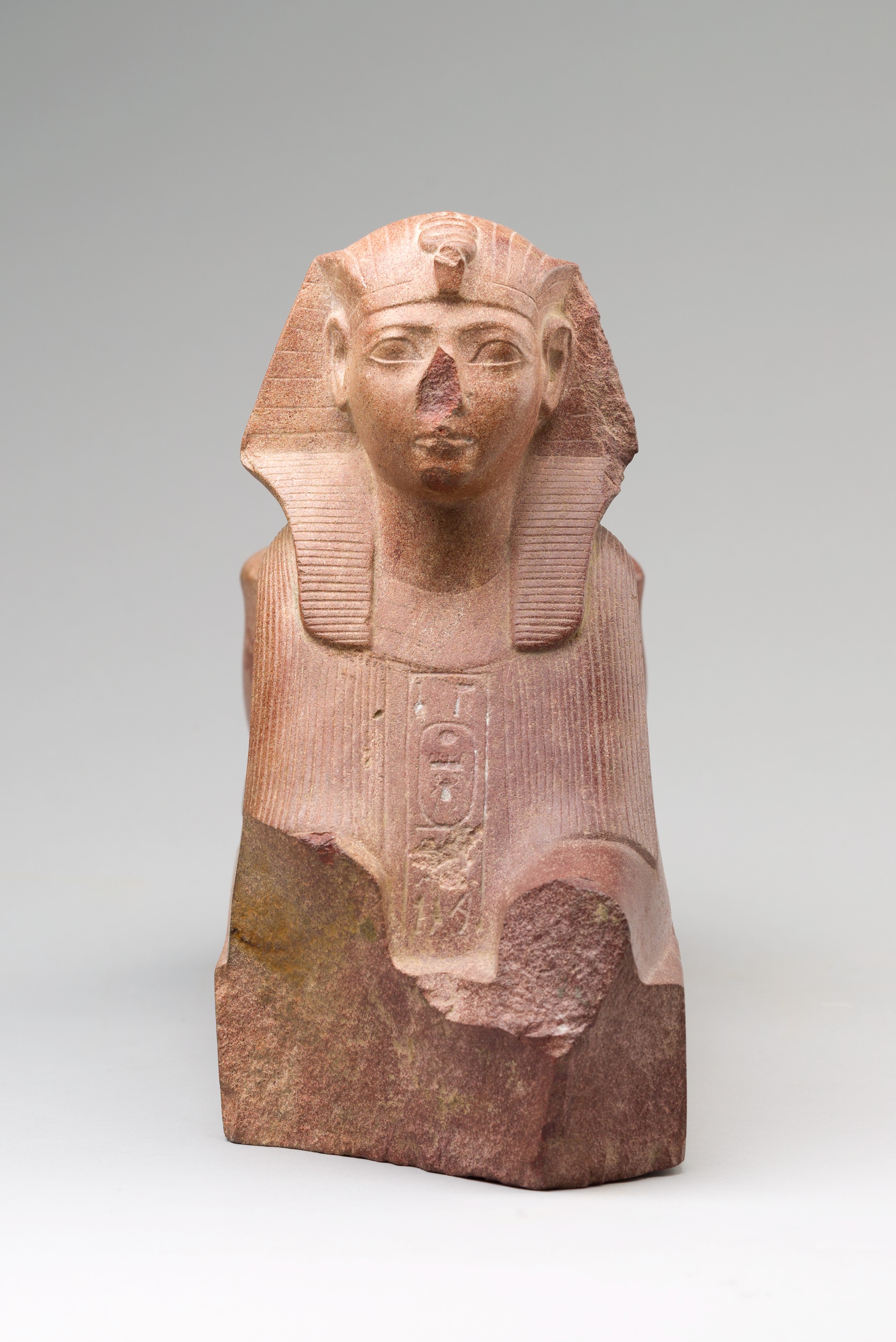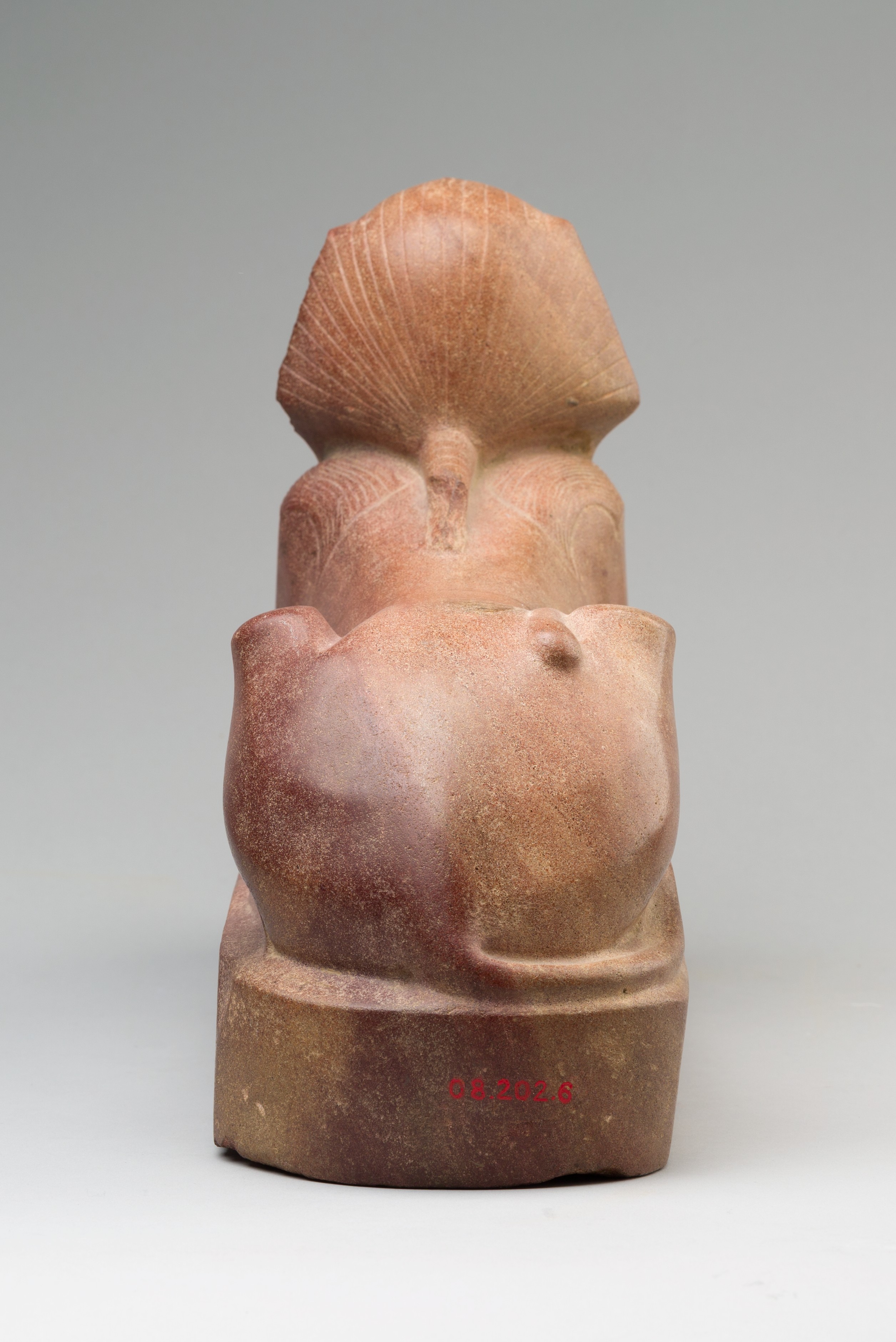Sphinx of Thutmose III
New Kingdom
This finely executed representation of Thutmose III is made of extremely hard stone. The transition between the head of the king and the powerful feline body has been masked by the nemes headdress and the stylized lion's mane which forms a bib-like panel on the chest. A short column of inscription running down the chest identifies the king as "the Good God Menkheperre, beloved of [Amun]." The name of the god Amun was erased later in Dynasty 18 during the reign of Akhenaten, and was never restored. The Museum's Egyptian collection also includes sphinxes representing Thutmose's co-ruler Hatshsepsut (31.3.166), his son Amenhotep II (30.8.72), and his great grandson Amenhotep III (1972.125).
In Egyptian art, the sphinx statue dates back to Dynasty 4 of the Old Kingdom, more than a thousand years before the time of Thutmose III. The most famous example is the great sphinx at Giza which represents Khafre who also built the second pyramid in about 2500 B.C. The earliest sphinx statue in the Museum's collection represents the Middle Kingdom pharaoh Senwosret III (17.9.2) who ruled about 1850 B.C.
Due to rights restrictions, this image cannot be enlarged, viewed at full screen, or downloaded.
This artwork is meant to be viewed from right to left. Scroll left to view more.
